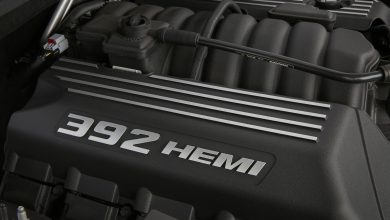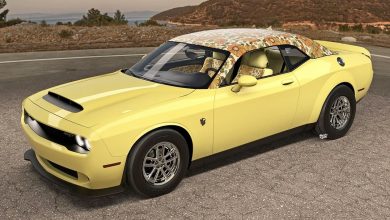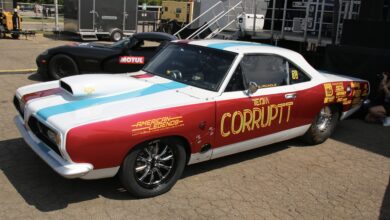April 4th, marked the 10th anniversary since the Chrysler Group’s Street & Racing Technology (SRT) brand unveiled the fifth-generation (GEN V) Viper at the 2012 New York International Auto Show (NYIAS). Although the GEN V Viper was the last super sports car from the Chrysler Group, some consider it the greatest. With a beautifully sculpted body, 645 horsepower, manual transmission, and the best power-to-weight of any Viper ever built, it’s hard to doubt that statement.
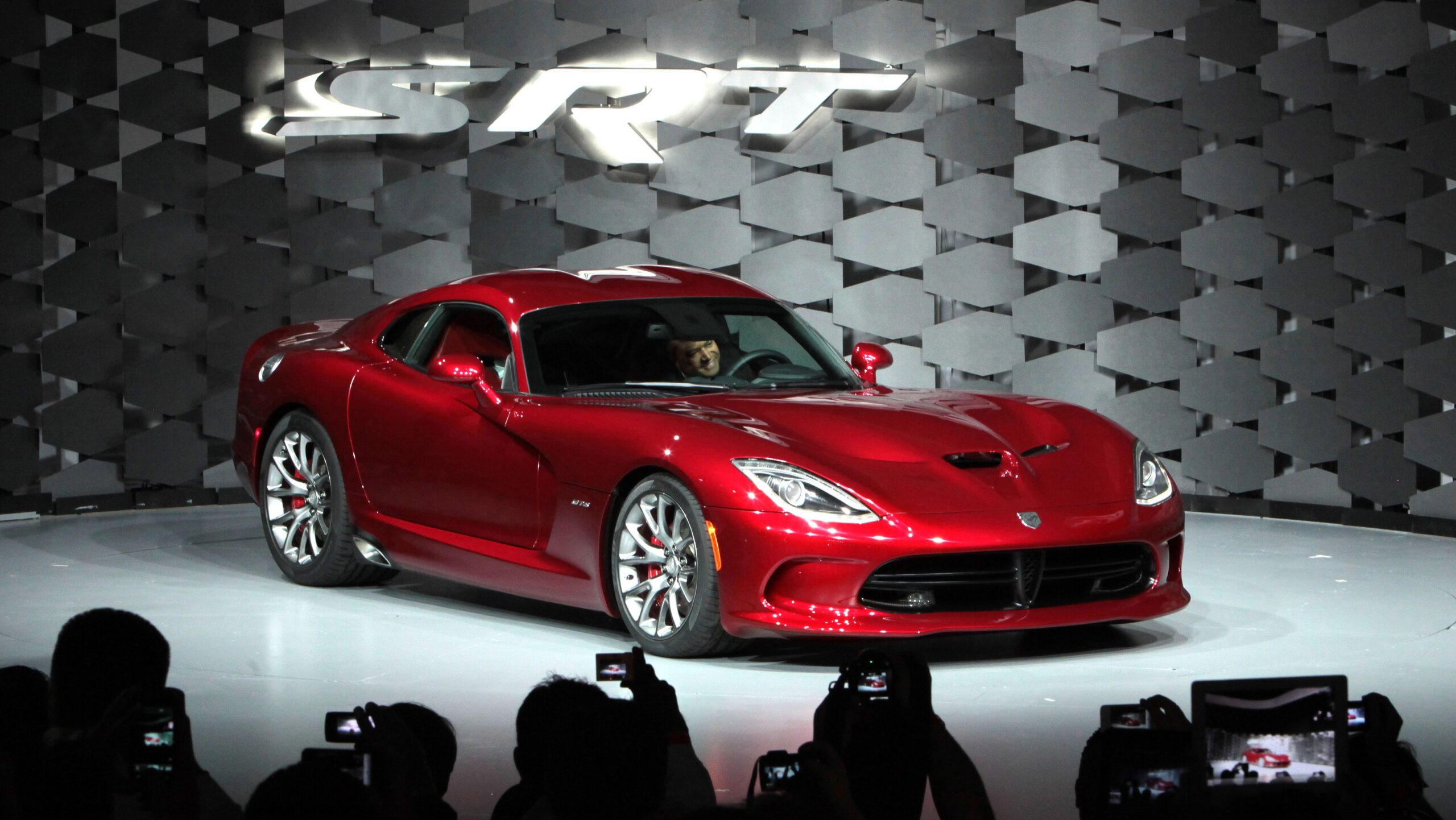
We figured we would relive that wonderful Wednesday, where we first learned about the GEN V Viper.
The Models –

In its first year of production (2013), the car came in two models – SRT Viper and SRT Viper GTS. Both models were hand-built at the Conner Avenue Assembly Plant (CAAP) in Detroit. The Viper called the CAAP facility, home from 1995 to 2017 when it ended production. Both the SRT Viper and SRT Viper GTS offered new interior and exterior designs incorporating premium materials and new exterior surfaces with aerodynamically functional details that are beautifully integrated into the high-tech carbon fiber and aluminum skin. On the inside, designers and engineers strived to rethink all touchpoints; and upgrade all material appointments and technologies.
“After a gut-wrenching period of uncertainty, the [SRT] brand team is extremely proud that our hand-built in Detroit, flagship supercar is back and ready to take on the performance car world,” said Ralph Gilles, then-President and CEO of the SRT Brand and Motorsports. “Beyond being the flagship for the new SRT brand, the launch of the 2013 Viper proves that we simply would not let the performance icon of the Chrysler Group die. Willed to live on by a very special group of performance enthusiasts inside the company and across Viper Nation, this SRT team under our new leadership was challenged to not just continue the legendary Viper, but to create a world-class supercar that would showcase the very best we have to offer.”

The SRT Viper model blended world-class levels of pride, quality, and hand-built craftsmanship while retaining the extreme and iconic core performance capabilities of what has become the DNA of the Viper. The Viper GTS built on the DNA of the SRT Viper models and added more technologically advanced solutions, like a driver-selectable suspension system that allows this world-class car to find extreme limits on the track while also opening up its envelope as a more mature evolution of the classic, extreme performance formula.
Designed and built with premium features and materials inside and out, the Viper GTS competed with the best performance touring cars in the world and offered a wide range of creature comforts, advanced drivetrain, and interior technologies.
Drivetrain –

At the heart and soul of the SRT Viper was the venerable, hand-assembled all-aluminum 8.4-liter VIPER V-10 overhead-value engine. The 2013 version included a new, ultra-high flow and lightweight composite intake manifold, high-strength forged pistons, sodium-filled exhaust valves, new catalysts to reduce back-pressure, and an aluminum flywheel that reduced reciprocating losses. More than 25 lbs. was shaved from the fully dressed engine.
Performance ratings for the 8.4-liter VIPER V-10 were 640 horsepower (477 kW) @ 6,200 rpm (76 horsepower/liter) and 600 lb.-ft. (814 N•m) @ 5,000 rpm – at the time the VIPER V-10 held the title for the most torque of any naturally aspirated engine in the world.
The Tremec TR6060 6-speed manual transmission was also improved with a shorter throw shifter, closer gear ratios, and a final drive ratio that was shortened to 3.55 from 3.07. The changes made the GEN V Viper more engaging to drive and allowed the top speed to be achieved through 6th gear with maximum engine speed (redline) @ 6,200 rpm.
Suspension & Chassis –

The GEN V featured a stiffer structure than the car it replaced, thanks to 50% more torsional rigidity, the chassis of the 2013 SRT Viper benefitted from numerous enhancements learned through racing efforts with the Viper GTS-R and Competition Coupe programs.
Other major updates included the addition of an aluminum “X” brace under the hood that tied the suspension pickup points to the magnesium cowl super casting and contributed to the car’s improved torsional rigidity and stiffness. An aluminum impact beam at the front of the car contributed to overall mass savings and improved weight distribution.

Structurally, many areas of the chassis were reworked to take advantage of new materials, reduce thickness in some areas and reshape components for more structural rigidity in others. The result was an overall weight savings of approximately 100 lbs.
At the rear of the vehicle, the suspension had been re-engineered with the toe link moved forward of the axle for better tow control and dynamic stability. For the first time, the GEN V Viper introduced a new driver-selectable two-mode suspension system, featuring Bilstein DampTronic Select shock absorbers with both “Street” and “Track” settings, which was standard on GTS models.

The 2013 SRT Viper rode on standard Pirelli P-Zero, Z-rated tires which substantially improved overall performance, cold-weather performance, enhanced overall grip, and steering response on a variety of road surfaces while also broadening the performance envelope. An optional SRT Track Package featured Pirelli P-Zero Corsa, “soft”-tuned, “racing-type” compound tires that improved handling and precision further on the road or the race track.
Also for the first time, the 2013 car added standard safety technologies such as electronic stability control and traction control help to maximize traction performance at virtually any speed and driving environment. All of the cars also came with a steering wheel-mounted launch control button, allowing for optimal acceleration from a standing start.
Braking –

The GEN V Viper was engineered to provide shorter stopping distances, better modulation, improved durability, and balanced brake performance without fading under extreme conditions. The Viper featured four-piston Brembo brakes with fixed-aluminum calipers, and vented rotors with 355mm by 32mm, used at all four corners. Brakes calipers were forged and weight-optimized by full-machining on all surfaces. The calipers were among the stiffest available with distortion from heat nearly eliminated even under the most demanding braking conditions.
An available SRT Track Package featured lightweight and slotted two-piece rotors from StopTech.
Interior –

The GEN V Viper’s driver-oriented interior cabins were totally revamped for 2013 with superior craftsmanship, premium material appointments, and performance-oriented technologies. For the first time, all major interior surfaces were sewn and wrapped with additional padding applied in comfort areas. On the Viper GTS model, all surfaces were fully leather skinned, and standard accent colors were applied to the seats, doors, center console, and stitching.
Quality fit and finish across the lineup were showcased by triple-paint-finished Gun Metal appliquéon the cluster bezel, HVAC outlets, window switch bezels, shifter base, park brake bezel and the integrated passenger grab handle on the center console.

Standard high-performance racing seats from Sabelt featured a lightweight Kevlar/fiberglass shell created by a state-of-the-art resin transfer molding technology for mass reduction and long-term durability. Both driver and passenger enjoyed improved comfort from thigh support and deep side bolsters designed to match the extreme lateral acceleration capabilities of the SRT Viper.
The seating position in the 2013 SRT Viper models was lowered by 20 mm for more room and enhanced performance-driving ergonomics. Seat travel was extended by 90 mm overall, which enabled expanded seating options from a more rearward positioned bulkhead. For the first time, seat height could be adjusted by up to 40 mm (manually on the SRT model and power controlled on the GTS).

The GEN V Viper was the most spacious model in the history of the nameplate. The floor pan and bulkhead were extended approximately 90 mm to provide improved legroom and more rearward seat track movement.
Specifically designed for the SRT Viper, a 7-inch, full-color, customizable instrument cluster display used a full-time analog tachometer readout in the center to confirm the performance driving feedback philosophy of the Viper. Drivers had a wide range of custom and personal options such as an additional digital speedometer readout just below the tachometer. The vehicle information was clearly communicated with easy-to-understand icons. Intuitively controlled through a simple four-way steering-wheel control, the driver could configure the screens to display the information they desire, easily mixing and matching information.
Uconnect Connectivity –

Viper customers could choose between two Uconnect Media Centers, RA3 and RA4, which provided a range of features and multiple ways to control media in the vehicle. The system included an 8.4-inch touchscreen along with a set of hard keys for commonly used functions, including traditional knobs for tuning the radio bands and radio volume. Touchscreen buttons along the bottom of the screen allowed drivers to easily access the radio, climate controls, navigation, phone, and applications. The highly sculpted steering wheel had a host of finger-tip-mounted controls for audio, Uconnect, cruise control (Viper’s first application), and launch control.
A range of Harman Kardon surround-sound systems was available across the SRT Viper lineup that featured the latest in audio system technology. All Harman Kardon audio systems included a high-voltage class D amplifier with a tracking power supply and up to 11 channels of amplification. The Harman Kardon system with exclusive Logic 7 surround-sound processing was available in the Viper GTS model with a total of 18-speakers, including four subwoofers located behind the seats.

All Harman Kardon systems in the SRT Viper lineup included high-performance, high-efficiency GreenEdge technology loudspeakers that were extremely light and included rare earth magnets. The magnets inside each speaker ensured efficient speaker operation and enhanced performance. The audio systems operated on 32 volts — so the new and improved sound system achieves more than double the acoustic power of the GEN IV car’s system.
Refined Evolution Of Design –
The GEN V Viper’s timeless exterior design blends contemporary execution with evolutionary refinement. A carbon-fiber hood, roof, decklid, and aluminum door panels were all first for the GEN V car. It resulted in a significant weight reduction, improved high-speed stability, and a slippery .364 drag coefficient.
The forward-hinged hood carried the redesigned Viper badge (named “Stryker” by the Viper Club of America), which was positioned in the center; and offered unobtrusive access to several service points and the 8.4-liter VIPER V-10.
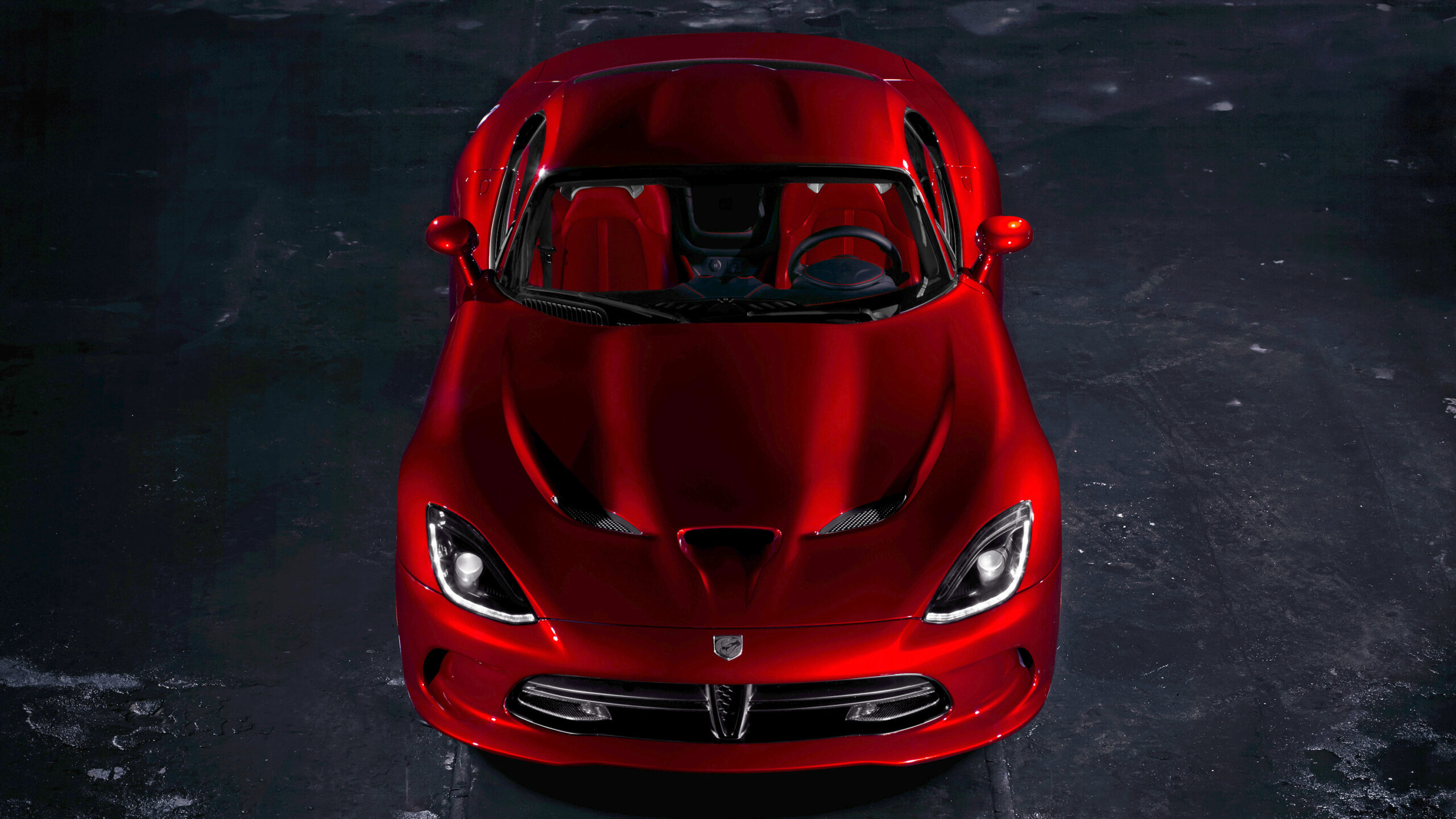
The classical low-stance and the extreme cab rearward proportions that had become the unmistakable silhouette of the Vipers of the past returned on the GEN V models along with the dramatic fender “gills”, another traditional Viper design cue that helped to extract heat from the engine compartment. The GEN V models featured a contemporary take on the traditional “double-bubble” roof configuration that maximized headroom for the driver and passenger while maintaining a low frontal area, allowing additional room for helmets while out on the track.
Dual-function, bi-xenon projector headlamps were tightly packaged with white Light-Emitting Diode (LED) Daytime Running Lamps (DRLs) and LED turn signals in a sinister “snake eye” configuration. Functional “blisters” incorporated into the 70 mm projector headlamp lenses created a three-dimensional view that gave Viper a distinctive glare.

For the first time, the GEN V Viper carried LED taillamps that integrated stop-and-turn illumination in one element. A snakeskin texture in the lens carried the surface work seen in the gills and hood textures. With dark-masked lenses, the horizontal lamps appeared dark until the LED elements were lit. Each lamp carried 50 LEDs that provided a unified “crystallized” illumination effect.
The lower-front grille was purposefully designed as an evolution of the traditional Viper low-profile cooling opening configuration and discretely carried a refined V-shape structure. The exhaust system continued to exit forward of the rear wheels and carried further refinement with cast aluminum, sill-mounted exhaust bezels.

A five-spoke, forged-aluminum “Rattler” wheel design on the SRT Viper was available with fully polished (standard), or fully-painted Hyper Black or fully-painted Low Gloss Black finishes. The Viper GTS featured a split six-spoke forged-aluminum “Venom” wheels with three available finishes, including a polished face with Graphite-painted pockets (standard), fully-painted Hyper Black, or fully-painted Low Gloss Black.
The optional SRT Track Package wheels were offered in an ultra-lightweight, track-ready wheel in Hyper Black or Matte Black finishes.

The GEN V Viper would run for five production years, breaking a number of records during that time. In October 2015, Dodge announced that the Viper would end production in 2017. Dodge cited poor sales as a reason for discontinuing its super sports car, however, many sources have stated that the GEN V was discontinued due to the car being unable to comply with Federal Motor Vehicle Safety Standard 226 (FMVSS 226), which required side curtain airbags.
During its production run, only 2,427 units of the GEN V were produced. Making it the rarest of the five generations of Viper.
2013 SRT Viper GTS Image Gallery:













